Introduction

If you have ever looked into buying your first home, or indeed, if you know anyone who has bought a home, it is likely that you have come across the term ‘mortgage’.
Now, you may think you know what it is and may have a rough understanding that it is a way of borrowing money for a real estate purchase, but do you know much else about it? Don’t worry if the answer to that is ‘no’ because you are not alone.
Even though Millennials are slowly becoming the largest mortgage holders in the United States, many of us still don’t understand all the details and finances on how they work or how long it takes to secure a mortgage.
It is also true that, as a Millennial, you may find that more and more of your fellow Millennial friends are still stuck renting their apartments and homes with no option of getting a mortgage anytime soon.
This means that when it comes to you getting a mortgage for your first ever home purchase, you have no one to turn to except maybe older relatives who went through this process many years ago.

Studies have found that when comparing Millennials aged 18-35 to those of previous generations at ages 18-35, Millennials are way behind when it comes to how many of them own property.
By this we mean, those of older generations, when they were in the age bracket of 18-35, had more people owning houses than they do now.
In fact, take the age of 30. It is thought that only 42% of Millennials (1980-1998) at the age of 30 own a home, compared with 48% of Generation Xers (1965-1979) and 51% of ‘baby boomers’ (1946-1964). This puts Millennials way behind where other generations are.
It should be noted here that some sources state that Millennials were born in different periods, with one academic paper by Brookings Institute quoting: “The Millennial generation includes individuals born between 1981 and 1996”. Bear in mind that, when referring to Millennials, different sources might have different viewpoints on where exactly what cut-offs lie.
That’s where we come in. We are here to tell you some good news. Whilst it is true that Millennials are far behind other generations in terms of owning homes at their age, they do now make up most of the housing market, and there are certain things that can be done to help get Millennials up there with the other generations.
In this article, we are going to be giving you a complete guide to mortgages, from helping you avoid common mortgage mistakes of first time homebuyers to home refinancing to pay off debt.
It is going to be tailored towards Millennial first time home buyers, exploring exactly what sort of hurdles you may come across, explaining the important terms and what they all mean, and telling you how you even go about getting a mortgage in the first place.
A good place to start would be to explore the concept of the mortgage and what it actually is, right? Head on over to the first section of our article to learn more.
What is a mortgage?
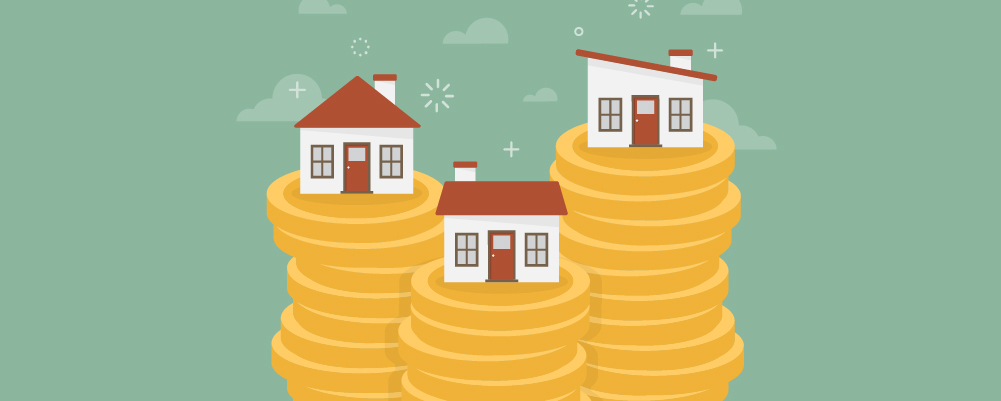
So regardless of your knowledge of a mortgage already, we want you to put it all out of your head because we have found an excellent, easy-to-understand explanation of a mortgage that is free of jargon and words that make no sense.
To put it simply, a mortgage is a loan. Simple right? Let’s delve into this a little deeper. A mortgage is a special type of loan that is most commonly used to purchase a home or piece of real estate. Still with us?
Mortgages come from ‘lenders’ (this is an important term, so remember it!), usually in the form of a bank, but can also come from credit unions and some other financial institutions.
Your mortgage lender (again, this is your bank, credit union, or other financial institution that has lent you the money) pays for the piece of real estate or house upfront.
You then have to pay the amount back to them. This repayment of the loan is decided before the purchase is made, and usually falls over a number of years. It is paid back in installments, typically monthly installments, and has interest added on top.

Got that? Okay great, because there’s a little bit more to add! When you enter into a mortgage, you are entering into a secured loan. This means that whatever you are borrowing is borrowed against an asset. The asset in the case of a mortgage is your piece of real estate which is, more often than not, your home.
What this means for you is that in the event that you cannot make your mortgage repayments for whatever reason, your lender (bank, credit union, or another financial lender) has the right to take your home from you and claim it back. This is called a repossession.
The good news is, though, that once you are all paid up and the loan has been paid off, that piece of real estate is yours forever, and the lender cannot take it from you.
How does a mortgage work if you’re a first time home buyer?

Now that you know exactly what a mortgage is (if you’re still unsure, have a little read through that first section again just to let it sink in!) we can move onto a discussion about how mortgages work for first-time home buyers.
The process is understandably daunting, especially if you have no loved ones there to advise you along the way. However, there are steps that can be taken to relieve some of this fear, and this article is definitely a step in the right direction.
First time home buyers can secure a mortgage. The process can be a lengthy and confusing one, but there are many resources out there to help you along the way.
As well as this, there are also some benefits to being a first time buyer that you can make use of. These benefits are put in place to encourage more people to join the real estate ladder, because, after all, the more people buying houses the better for the economy! These benefits may vary state by state, but some of them include:
- ‘Help-from-the-state’ programs
- Tax breaks
- Federal backed loans
- Help if you don’t have the required minimum down payment
- …and much more, depending on your state
These benefits make entering the property market that little bit more appealing, and offer a small helping hand when you are struggling to save quite enough.
What do we mean by down payments and saving, we hear you ask? Well, this is an important step for first time home buyers that needs to be considered. Remember when we told you about the lenders paying the mortgage upfront? Well, typically, lenders require you to put down a ‘down payment’ first.
This can also be called a ‘deposit’. This down payment is a percentage of the price of the real estate or property you want to buy. The down payment is typically paid to the lender, and then the lender deducts that from the rest of the price. Traditional advice will tell you that you should put down 20% of the price as a down payment. Let’s do some math real quick:
Zillow tells us that the median house price in the United States is currently at $266,222 at the time of writing (keep in mind that they update these figures seasonally).
If you were to buy a house for $266,222 and put down a 20% down payment, then you would need to raise $53,244.4 as a deposit to give to the lender in order to get a mortgage.
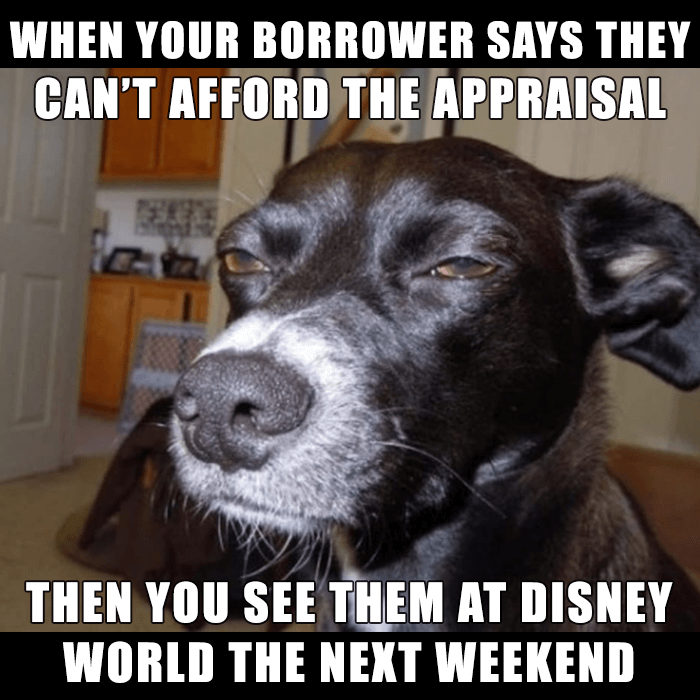
Of course, that is a hefty sum of money and many of you will now be looking at your screens in horror thinking you will never be able to afford this. Some good news though, this is what was traditionally recommended. These days, it is very common to see lenders accepting down payments of far less in terms of percentages.
In fact, some accept as low as 3% and 5%. In the next section, we are going to be exploring the different types of mortgages, and the first point that we will be looking at is first-time homebuyers’ deposits. Head on over to the next section to find out more about them, as well as some very useful information on the types of mortgages you can get!
Types of mortgages rates
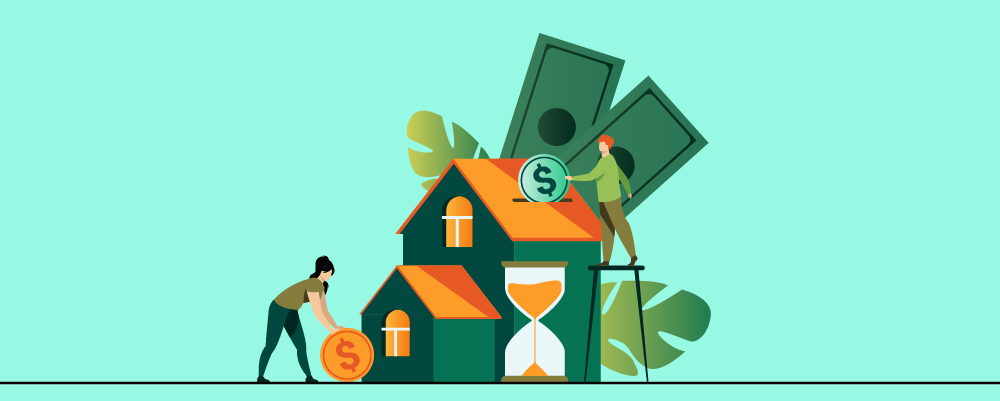
There are a number of different types of ways that you can go about getting a mortgage. In order to get a full understanding of each of them, we want to explore them separately. Your first mortgage payment is due after closing so make sure you understand each step of the process so that you’re prepared.
First time buyer’s deposit

As we mentioned in the previous section, there typically needs to be a down payment or deposit put down before the lender agrees to give you a mortgage.
Our previous section explored the fact that, traditionally, this was expected to be 20% of the cost of the real estate or home.
However, we also stated that many lenders allow this to be much lower. Here, we will be looking at the options for deposits when you are a first time home buyer.
One option would be to seek out a lender who will accept one of these lower percentages down payments.
They may seem like a fantasy but trust us, they are there, and there are many! Shop around and look for lenders offering the lowest down payments you can find.
Of course, this means that your monthly payments will be more expensive, and you may be required to pay Private Mortgage Insurance (PMI) than if you put down, say, a 20% deposit, but it is still a worthwhile avenue to explore if you desperately want your new home now! (Also note that some states allow for a tax deduction of mortgage insurance.)
Another worthwhile option is to seek out some down payment help schemes, or down payment assistance programs, as they are also called. These schemes are in place for people from a variety of backgrounds.
Some of them are state-dependent, for sure, so you need to check with your individual state officials, but there are plenty of schemes out there to choose from. Let’s explore some of them.
- The first one we want to explore is forgivable, zero-interest loans. These are loans that are given to you to use as a down payment on a property. For a period of time, the loans are ‘forgiven’, meaning they are essentially forgotten about. A common period of time for these is five years. When this time is up, the money only needs to be repaid if the owner does not own the property or live there. If you still live there and own the property, then the loan is forgotten forever.
- Some down payment assistance schemes give out grants. These are essentially gifts of money that never need to be paid back. Of course, as you can imagine, these are few and far between, and usually require a number of different specifications and requirements to be met. Nonetheless, they do still exist and so it is worth seeing if you could be eligible for this.
- Another form of down payment assistance scheme involves lending out of a low-interest loan. This loan is undertaken as a means of putting a down payment (deposit) on a piece of real estate. They also cover the closing costs of the down payment. This sort of loan is paid back over a period of time, for example, 10 or 15 years. The interest remains low on the loan, making it more affordable and attainable for people who are struggling to save their down payment.
- There are also down payment assistance schemes that involve another type of loan. These loans are zero-interest, deferred payment types. These loans vary with regards to the terms and conditions, depending on from whom you get the loan, as well as your state and other factors. These loans accrue no interest over time, meaning the amount you borrow is the amount you pay back. However, the payback of the loan only happens under certain conditions. For example, some terms and conditions may specify that you only need to pay back the loan when your mortgage reaches the end of the term. Whereas others state that repayment is only needed upon the sale of the home in question.
First time buyer’s mortgage

First time buyers’ mortgages vary depending on where in the States you are — different states offer different programs. However, the concept remains the same, and that is to help out first time buyers’ with more affordable loans.
This could include loans with a subsidized interest cost (some organizations may even offer to totally write off the interest cost).
This means monthly mortgage repayments for first time homebuyers will be much lower.
Another option is loan forgiveness. Loan forgiveness is when the mortgage gets cancelled (either fully or partially) over a long period of time.
Other states may offer different programs, and whether you can get them will depend on a number of factors such as your financial situation, if you have assets or savings, and whether you have owned property in the past. There are many different types of home loans so let’s review the options.
Joint mortgage

A joint mortgage is when you and a ‘partner’ (this does not need to be a romantic partner) apply for a mortgage for a piece of real estate together. This allows better access to more mortgage rates and terms because the income and assets of both of you are looked at.
This is a popular choice for couples looking to buy a home together, and especially great if you are interested in qualifying for a bigger loan for a pricier piece of property.
A report done by the National Association of Realtors found that “Sixty-one percent of recent buyers were married couples”, proving how common it is for couples to purchase a property.
Guarantor mortgage

A guarantor mortgage is a mortgage that allows you to ask a member of your family (this is typically your parent or grandparent) to assist them.
By this we mean that the grandparent or parent becomes a guarantor, allowing their own assets to be used as a debt guarantee.
This is usually their own home or savings.
This means that if you fail to make your mortgage payments, the guarantor must cover them for you or else risk their assets being repossessed.
Shared equity

A shared equity mortgage is also known as a partnership mortgage (there’s a clue there). Essentially, the buyer borrows money from an investor, organization, or municipality for either a part of the purchase price, the down payment, or the closing costs of the purchase.
The buyer enters into an agreement that they will share the eventual sale cost of the purchase in exchange for the initial amount.
This is an attractive option for first time buyers who may almost have enough money but don’t have the down payment fully saved, or need help with the closing cost.
Fixed rate mortgage
Having a ‘fixed rate’ mortgage simply means that the rate of interest that you pay is capped for the entirety of your mortgage. This makes budgeting and planning easier because you know exactly what will be coming out of your paycheck each month, rather than having unpredictable interest rates that can change drastically. Knowing the best day of the week to lock in your mortgage rate is more important for fixed-rate mortgages because you, the borrower, will be stuck with that rate forever (or at least until you decide to refinance).
Discount rate mortgages

These types of mortgages are also known by the terms ‘mortgage points’ and ‘discount points’.
What happens is that you pay a fee to your lender when you close in exchange for reduced interest rates. In turn, this lowers your monthly mortgage repayments.
In general, for every 1 percent of your mortgage that you pay the lender, that equates to ‘one point’.
What you will be essentially doing is paying interest upfront, in turn, lowering your monthly payments.
Capped mortgages
These types of mortgages mean that your interest rate can never surpass a certain limit. This limit is a ‘stated interest cap’ agreed upon when you take the mortgage out. The rates can fluctuate within the agreed range from a starting interest rate.
Federal Housing Administration (FHA) loans

These are government backed loans lent out by the Federal Housing Administration.
They are designed to help all buyers (not just first time home buyers) who have a modest income to buy a home.
They are desirable because of their allowance for low down payments (some of them are as low as 3.5%) and will accept people who may have lower credit scores than is typically needed for a mortgage.
Fixed rate mortgages vs. floating rate mortgages – the difference between the two

We explored the idea of a fixed rate mortgage in the previous section, but just as a recap, let’s remind you of what it is:
A ‘fixed rate’ mortgage simply means that the rate of interest that you pay is capped for the entirety of your mortgage.
But what about floating rate mortgages? Before we explore the difference between the two it would be helpful first for us to explain what a floating rate mortgage is:
A ‘floating rate’ mortgage is where the interest rate can vary alongside the market or index. It can move up and down over the whole term of your mortgage. You may also hear it referred to as a ‘variable rate’ interest or adjustable rate mortgage.
As you can hopefully see by now, the main difference is that a ‘fixed rate’ mortgage will have one set interest rate that will not move up or down, regardless of what the market or index does. A ‘floating rate’, on the other hand, can vary. Each of them have their own pros and cons. To explore these in more detail, take a look at our table.
Pros and cons of fixed versus floating interest rates for mortgages
| Pros | Cons | |
|---|---|---|
| Floating | Typically they have lower starting rates than ‘fixed’ mortgages, making them more desirable to buyers | They may ‘float’ upwards, making monthly payments more expensive |
| There is a chance they may remain very low for long periods of time, perhaps getting lower even than ‘fixed’ rates. | They can vary quickly and drastically, making it harder to budget for the long term. | |
| Fixed | The price is predictable as it is always the same making budgeting easier | They tend to be much higher than ‘floating’ rates which makes them less attractive to buyers |
| It is possible to find low fixed rates, even though they are rare to find. This would make the interest you pay low over the whole term of your mortgage | It can take a long time for the fixed interest rates globally to ‘come down’, meaning some people get tired of waiting and just choose a ‘floating’ rate. |
How much can I borrow for a mortgage?
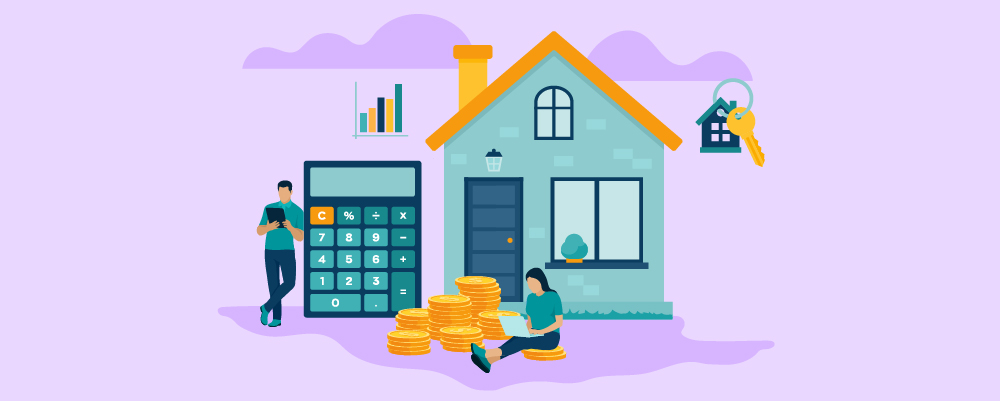
How much you can borrow for, or qualify for, a mortgage depends on many different factors. It can be quite a long process, and for most people, it requires at least a few months of preparation beforehand to make sure everything is ready.
In this section of the article, we will be taking a look at the different factors you need to consider before going ahead and asking to borrow money from a lender for your mortgage. These factors will all come into play when the mortgage lender is deciding whether to lend you the money.
Your credit rating and history

First thing’s first, you need to get your credit rating and credit history under control. There is never a wrong time to start keeping track of your credit.
Some lenders will only lend to you if you have a credit rating of over a certain amount. Typically in the States, you will find lenders stating that you need a credit rating of at least 620.
As an example, some of the best online mortgage lenders at the time of writing this article all state that the lowest accepted credit score they will take is 620.
However, there are some lenders that will accept less. The FHA, for example, lend out to those with much lower scores of 500.
Your outgoings

Lenders will want to look at what outgoings you have to your name.
They will want to see that you have been a trustworthy bill payer for a long period of time and that you can sensibly manage your money without any big unnecessary splurges that leave you in minus numbers each month.
They do this to ensure that you have enough money coming into your account each month to cover a mortgage payment.
They need the reassurance that you will be able to meet these payments. It is likely that most lenders will want to see at least three months’ worth of bank statements — perhaps more.
They will also check for ‘sourced and seasoned’ money. Sourced money is money that is clear where it has come from seasoned money is money that has been sat there a while and not just appeared suddenly. These get checked to ensure that there is no fraud or money laundering.

Your salary, along with any additional income
You will likely have to provide pay stubs to your mortgage lender to prove the amount of money you get paid regularly, and to let them know that your salary will cover the payments as well as allowing you to have more money left for other expenses.
They will also need proof of any other income you have coming in, whether that be alimony, royalties, or any other sources of money that gets paid to you regularly.
How much deposit you have

We are sure you know by now how important it is to have a deposit saved up, after all, this will be the down payment for your future home. However, it is also important from the perspective of the lender.
They want to be reassured that you are serious about this and that you have been working to build up to this for a long time. Your deposit is required for nearly all mortgage lenders as a way of working out what interest rate you will have.
The higher the down payment, the lower the interest rate is likely to be, and the less you will need to borrow. So, with this in mind, it is of course more attractive to lenders to lend to someone with a higher deposit or down payment.
It is worth bearing in mind here that the higher your loan to value (LTV) ratio, the more risk the lender is taking. This means that the lender takes on a higher proportion of the debt, and as a result, may require you to have private mortgage insurance.
What to consider when taking out your first mortgage

When you are taking out your first ever mortgage, there are a number of factors that you need to take into consideration, that don’t relate solely to the type of mortgage and saving for a deposit.
There are all the fun parts like choosing a location, choosing the house, working out a budget and how you can save, and much more.

Then there are the tedious things like the mortgage application form, budgeting for monthly payments, and the economy. In this section we have decided to explain each of these factors in a little more detail, to give you an idea of what to expect.
Location

Think about where you want to live. What is your ideal location? Countryside or city? Suburbs or small towns? All of these places will have different types of houses, as well as different prices.
It is generally more expensive to live close to the city, especially if it is a particularly big or busy city.
However, living in a city may cut down on commuting costs, which is very important to Millennials and the younger generation according to the National Association of Realtors: “For buyers 22 to 29 years, commuting costs were very important at 45 percent”.
As well as this, house prices and real estate vary so much depending on the State you plan to live in. Start to draw up some plans about States you are interested in, as well as must-haves in your local area, and then what you are looking for from a home.
Needs VS. Wants
Narrow your ideas down to as small a list as possible and finding your dream home will be easy as pie and will give you a better understanding of the sort of prices you need to be looking at. Millennials will be glad to know that these days, searching for houses has never been easier.
Gone are the days of trawling through listings in the newspaper or going to your realtor. Now, a simple search on one of the many popular real estate websites will bring up hundreds of suitable properties for you.
The most popular websites in the States are Zillow, and Redfin. Between 40% – 43% of people aged 22-39 (Millennials) looked at real estate online as the first step of their mortgage process, demonstrating just how important it is.
Mortgage application form

You will need to fill out an application form to your lender to ask for the money you wish to borrow for your piece of real estate.
This form is generally the universal 1003 form, known by its official name Uniform Residential Loan Application.
On this form, you will need to provide lots of information about you and anyone else who is applying for the mortgage with you, as well as information about the property you plan to purchase and much more.
Monthly Repayments

As we have made clear by now, monthly payments are the most common way of paying back your mortgage to the lender.
You need to take these monthly payments into account before even taking the first step of the mortgage process.
Weigh up the pros and cons of these payments, and closely assess whether you be able to afford them, factoring in some contingency planning in case your financial situation changes, and assessing how much you can realistically afford.
Budgeting
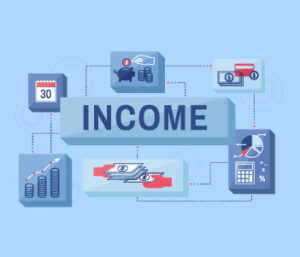
Related to the factor above, budgeting is yet another important factor to consider. If you aren’t already sticking to a budget plan, you better get on it right away!
Buying a piece of real estate is likely going to be one of the biggest purchases you will ever make, and so you need to budget properly for it, even after you have secured the home.
There will be repairs to be done over the years, general upkeep, decorating, and possibly expansion if that is something you want.
Ensure you have a good budget plan in place (we give you some tips for budgeting later on in the article).
Economy

The last thing you need to consider is the economy. Now, this is something you cannot really control, and so we cannot give you any tips on this.
One thing to bear in mind though is that as the economy changes, house prices rise and fall. As well as this, jobs may come and go.
If you are in a job that is likely to be affected by changes in the economy, it is definitely worth considering saving a fair amount of money to fall back on if possible.
Likewise, you may wish to wait it out a little bit to see if house prices are predicted to rise or fall. You can keep your eyes on this by reading economics reports in newspapers, on the television, or of course, websites like The Economist
Where to get a mortgage

Traditionally, generations past would get their mortgages from mortgage brokers, directly from banks and other lenders. However, now you can get a mortgage online! The process of getting a mortgage online offers far more convenience for buyers as it is quick and automatic. In fact, it is even thought to be a great way of saving money!
The rise of online mortgages is partly thanks to Millennials. As the National Association of Realtors indicates, Millennials have made up the bulk of the population buying homes for a number of years. They are now in their home-buying ‘prime’, for want of a better term.
The love of fast-paced, convenient, and automatic processes has meant that the market has needed to adapt for Millennials — that’s where online mortgages come in.
Gone are the days of stuffy offices and piles of paperwork; now you can apply for a mortgage on your sofa, with Netflix playing in the background (maybe you’re even watching a popular real estate reality TV show …who knows?).
Of course, we would still always advise shopping around first and getting preapproved from some lenders before you start to house shop. This way you can get some quotes, see what sort of mortgage you could get, and then start to assess what you could get for that amount before diving into the deep end.

There are pros and cons associated with buying a mortgage online, as there is with everything. For some people, they will be attracted to the fact that it is often quick, allowing you to get pre approved at just a couple of clicks of a button. It may even help to reduce the closing time on your mortgage!
However, it may not always be the most affordable option, and you should also consider meeting a traditional mortgage broker or meeting with your bank to get a full range of options.
First time buyer mortgage calculator

You can also get a fair idea of what sort of mortgage you could be looking at by taking matters into your own hands. Using an online mortgage calculator can help give you a rough understanding of what sort of property prices you should be looking at.
You can access mortgage calculators on many real estate websites. We like Zillow’s calculator because it is clear, easy to use, and free of jargon.
You may also wish to check the website of your bank to see if they have one. Bank mortgage calculators can sometimes be a little more in-depth, giving you a better understanding.
It is important to remember that the result you get from the mortgage calculator is just a guideline. It does not automatically guarantee that you will be accepted for a mortgage of that amount, or indeed that you will be accepted at all.
However, it does provide you with a foundation from which you can assess the housing situation, allowing you to look for the types of houses you can afford with that amount, and giving you an indicator of whether you will need to save more money for a down payment.
Deposits for first time buyers
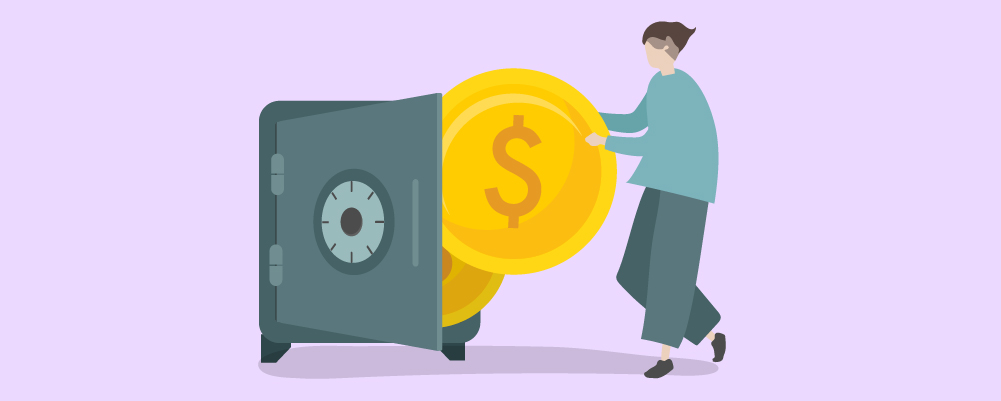
How much you will need for a deposit

The amount you will need for a deposit as a first time buyer will vary depending on a number of factors. As already discussed, traditionally home buyers were advised to raise at least 20% of the price of the home as a deposit.
However, times have changed, and many mortgage lenders will allow you to put down much less of a down payment in order to get a mortgage. Keep in mind that the more you put down as a down payment, the less you will need to borrow. Also, if you put down more, you can always refinance later. How long it takes to refinance your home depends on your lender and state but the more equity you have in your home, the more you can pull out later.
This will make you more favorable in the eyes of a lender who will see that you are investing more into the purchase. It may also mean that your interest rates are lower, and will certainly make your monthly mortgage repayments lower, too.
It is wise, then, to save as much as possible, for your down payment and any additional costs you may incur. That being said, do not fret too much if you feel that a 20% down payment is too big an ask. As we mentioned, many lenders now accept less, especially from first time buyers.
It may just mean that you will need to pay private mortgage insurance on top of your monthly payments if you have a conventional loan. As well as this, there are also options such as the FHA (Federal Housing Administration) loans that we discussed above that accept down payments as low as 3.5%.
The bottom line: Save as much as you possibly can, but don’t worry too much if it isn’t quite 20% as there are ways around it.
How to save for a deposit for a house
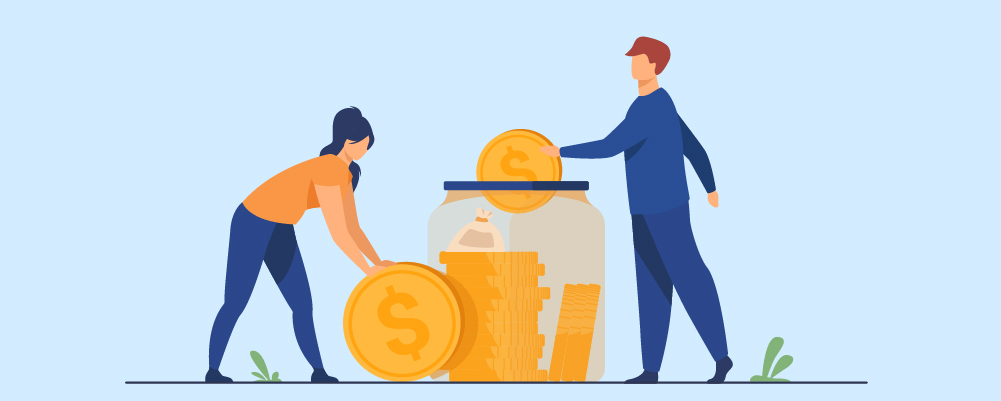
Without a doubt, saving for the initial down payment or deposit on your first time is the most difficult and daunting thing of all. When you first start thinking about the amount of money you will need it can be easy to want to move back home with your parents forever. However, if you break down your saving into small steps, it can start to feel much more manageable.
First thing’s first, we want to reassure you that you can save. As impossible as it seems now, you can do it. In this section of our article, we have broken down some of our favorite money-saving tips and applied them to the mammoth task of saving for a deposit for a house.
- Sit down and look at your finances. This can be a terrifying prospect for many people who avoid looking at their bank statements, or their mobile banking phone apps. However, as much as we hate to give you the bad news — you need to. It is absolutely essential that you get to know your finances inside and out. Start small by looking over your spending from the last few months (go back 3 months, then 6 months, and then a year). When you do this, look at your incomings and outgoings. Where are you spending the most? Where can you budget your lifestyle expenses? How much of your paycheck is going on travel costs, rent, bills, food, and other essentials? Are those daily coffee shop treats making a hole in your wallet? Really face up to your money situation and try your hardest to figure out what spending can stop and what needs to stay.
- When you have familiarized yourself with your finances completely, start drafting up a saving plan. You will now know how much you can logistically save each month (it is important to allow yourself even a small amount of ‘fun spending’ even if it is just enough for a coffee date with your pals every month!). Your saving plan will be personal to you. There are many apps that can help you with it, or you can put it in an online spreadsheet if you are nifty on the computer. Of course, you can go old-school and write it all down in a saving journal if that suits you best.
- Question every purchase. Of course, we don’t mean the essential stuff here — gas, basic grocery shopping, rent, and bills don’t count here! What we mean by this is every time you feel tempted to buy something, question it. Really think about it in your head. Something that we do ourselves is to let ourselves ponder a purchase for a week or two before buying it. For example, if we see a really cool tech product that we like, the temptation can be to buy it right away, without really thinking about whether we really need it. If you give yourself a week or two to think about the purchase, you may find your feelings have changed. Of course, if you still want it as much in two weeks, and you know that it will be useful or will improve your life in some way, then go ahead and get it. This technique is designed to keep you on track with your saving and allow more thought to go into purchases, rather than the dreaded ‘impulse buying’.
- Lastly, before you start your home shopping, create a needs vs wants home buying checklist. This is where you prioritize what you want from your home. For example, maybe you live in the southeast US so air conditioning is a must have but a pool is a nice to have.. Or maybe you have a family so you need a lot of space. Whatever the case, by putting everything in a list you can see your home buying goals more clearly. This is also a good time to note that you may want to add “resale value” to your list. The resale value of a single family home vs condo vs town home varies greatly so be sure to read up on that first.
Other saving tips can be found all over the internet, and there are even apps and websites that can help you to save. The Consumer Finance section on the US Government website has some helpful tips regarding the saving of a down payment that are very helpful.

Our biggest piece of advice would be to keep track of everything you spend and everything you have coming in. Don’t be afraid to cut back on luxury items, try making use of coupons to save money on groceries, and to cut down on travel costs consider car sharing and walking where possible. Even the smallest savings can add up to huge amounts over time!
Millennials, we got your back!

As you can see, just because you are a Millennial, it does not mean that you are doomed to never own a house. Regardless of the statistics, there are ways that buying property can become attainable for you. Your first home purchase can be very daunting, but with the help of a great financial adviser, and guides such as ours, it is more than achievable.
Follow our guide and start researching for yourself the different types of mortgages that would suit you. If you are having trouble saving for your initial down payment, then check out the tips we have above for saving, or see if you are eligible for any of the down payment assistance schemes.
If there is one thing Millennials are known for, that is their penchant for researching – show everyone what you are made of and start researching profusely about mortgages and first time home buyer advice.
We are sure that our guide has been abundantly helpful in providing you with detailed information, and it is certainly a very comprehensive starting point. Before you know it you will be picking up the keys to your home, and we couldn’t be more pleased that our guide helped you get there.
Thanks for reading, and happy house-hunting!





